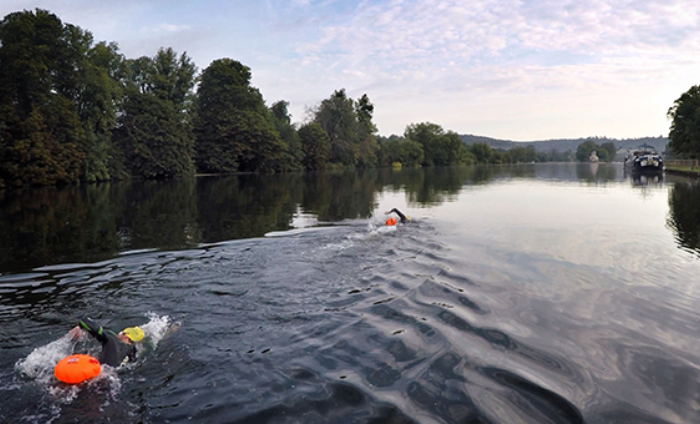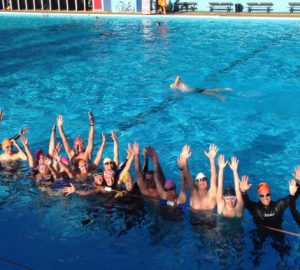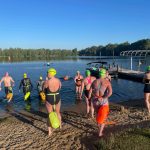
How to swim further
There are three key stages in becoming a long distance swimmer.
1. Ensure you can swim for several hundred metres without getting out of breath
2. Make sure your swimming technique does not cause or exacerbate any injuries
3. Build your endurance and mental resilience
Swim 100m without getting out of breath
A problem many beginner or infrequent swimmers have is that they quickly get out of breath. This can happen in as little as 25 metres. Being inexperienced, they may put this down to a lack of fitness but, in most cases, the problem is poor swimming technique. The swimmer may be expending excess energy trying to keep afloat, or holding their breath and becoming tense, perhaps even panicking.
If this is you, the solution is not to keep bashing out lengths, gasping as you recover at the end of each one. You need to learn to relax and feel comfortable in the water. Check out Keri-anne Payne’s article on the Art of Breathing to get you started.
Once you remove the struggle to swim, you will immediately find you can swim much further. You will be able to choose your effort level from totally relaxed to flat out sprint, and get to choose whether or not you get out of breath. You’re now ready to move on to stage 2.
Perfect your technique
One beautiful thing about swimming is that good technique not only looks amazing and helps you swim faster, it also the least likely to cause you injury.
As a swimmer you have a lower risk of injuries than a runner, but swimmers do have problems of their own. Shoulders are an obvious high risk area but not the only one. It’s also possible to end up with painful elbows and wrists, hip pain and back discomfort. However, these unpleasant outcomes are not inevitable.
There are three main steps in minimising your risk of injury: swim with the best technique you can, look after your body with an appropriate regime of strengthening and injury prevention exercises and only increase the distance you swim gradually.
It’s also a good idea to get in the habit of doing injury prevention and specific strengthening exercises before you start adding distance. Many of these exercises can be done at home with minimal equipment – a piece of stretch cord will be about all you need to get started. One way to remember to do them is to set aside 15 to 20 minutes before every swim and do them as a warm up.
Also, remember to look after yourself by sleeping sufficiently and eating well.
Build your endurance
Once you have the foundations in place, you can start increasing the distance you swim. There is no hard and fast rule for this and it depends on your swimming goals and how much time you want to devote to swimming.
If you are swimming three times each week or less, it’s probably better to add additional swim sessions before you increase the distance or time of the ones you are already doing. It is easier to maintain good technique by increasing the frequency of your sessions rather than the length – and whatever distance you’re swimming, stay relentlessly focused on technique.
While the steady, continuous long distance training swim has its place, you will benefit more from breaking most of your training sessions into sets. Training sets break down the distance into smaller chunks with brief rest intervals between swims. This allows you to swim faster and then recover sufficiently to keep concentrating on technique. By watching the clock while doing these swims, you will also be able to monitor your speed.
You can find some examples of training sets here from Olympic silver medalist Keri-anne Payne. Alternatively, try the exmaple below.
Repeat 400s
This is a simple but effective training set for building endurance. It is a favourite of Outdoor Swimmer founder, Simon Griffiths, based on a concept he stole from Keri-anne Payne and used in modified forms by a range of coaches. It’s simple, easy to remember, hard to do well and consistently, and it’s effective.
Warm up
300 to 600m steady swim, your choice mix of front crawl and backstroke.
Main set
N* x 400m front crawl
Cool down
200m easy, your choice mix of front crawl and backstroke
*N is simply the number of 400s you do. A good place to start might be 4 repeats. If you’re planning a marathon swim, consider doing 10. Simon once did 25 in a training session. Aim to swim faster through the session rather than starting too fast and grinding to a halt half way through. Keep your swim and rest time consistent throughout. Set your repeat time so that you get about 30 seconds rest after your first 400m and 45 seconds after your penultimate 400. Try to do this once per week either in a pool or in open water.







